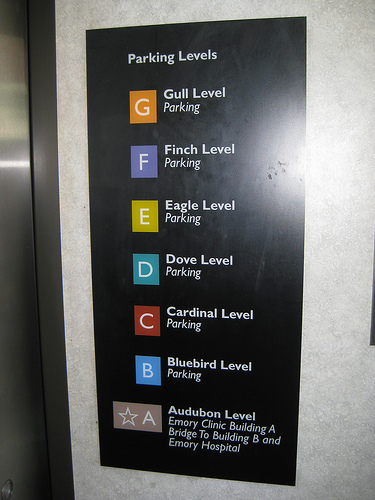Mobile wayfinding goes indoors
When’s the last time you pulled out a map to plan a route? How about stopping at a convenience store to ask for directions? Tech-free wayfinding is about as passé as the pay phone.
Technological advancements have brought us from verbal directions to paper maps to printed out maps using services like MapQuest to portable navigation units (TomToms) to nearly all of us having navigable maps embedded in our smartphones.
And yet, until recently, even the most advanced satellite-based maps (at least those used commonly by civilians) have been limited to the system of drivable roads. If you veered off the road into a field of corn, your map app would get very confused.
As for indoor navigation? Forget about it. Until now, that is.
Mobile wayfinding solutions have officially gone indoors. It’s about time, really. We take for granted that we can navigate to an office building in a city we’ve never been to, but once we’re in that office building, we’re left staring at posted directories and wandering around hallways.

Until now, it’s been costly and time-consuming to build wayfinding apps for use in sprawling, complex structures. Image from Sylvar.
That is, unless the building in question is associated with a MobileSmith mobile wayfinding solution. Rather than create individual mobile wayfinding apps, one at a time, MobileSmith is a comprehensive solution that “allows organizations with large and complex floorplans, such as hospitals, malls, or government buildings, to launch affordable wayfinding apps for iOS and Android.”
Since mobile wayfinding is a hot topic but still relatively new, most mobile wayfinding solutions take months to build. MobileSmith says that their solutions can be created “in a matter of weeks.”
MobileSmith is collaborating with Gimbal proximity beacon and geofencing technology to add layers of insight beyond simply avoiding aimless wandering. Users can:
- Find parking
- Find the correct door
- Find their way around inside
- Check in and check out automatically and nab a spot in line
The technology also allows businesses to track how much time visitors or staff spend in various locations. This is the point at which some people might start to get a bit uncomfortable, since it is slightly reminiscent of Big Brother. However, the tradeoff for spacial anonymity is a wealth of information.
If people in your department store spend a lot of time loitering by the escalators, you might want to put an endcap nearby that promotes impulse purchases. If your staff spend a little too much time in the smoking area, you might need to address the issue.
Several examples of these hyper-niche mobile wayfinding apps already exist. Wifarer is designed specifically for hospitals. (Which, let’s be honest, is one place you really don’t want to lose people.) Boston Children’s Hospital has used a similar app, called MyWay, for three years.
In 2014, Simon, the company behind many of America’s biggest shopping centers, launched what they call a “digital concierge network” in 30 markets. This service offers mobile wayfinding and an “interactive” experience that appears to simultaneously facilitate navigation and promote shopping.
MappedIn is one of the more recognizable names in mobile wayfinding designed for indoor spaces. MappedIn is designed for retail, casinos, event centers, and hotels including the Sheraton Centre Toronto.
You don’t need to be under a roof to appreciate the boom of hyper-niched digital wayfinding. The National Park Service offers highly detailed mobile wayfinding apps that help visitors find their way around National Parks while offering a GPS-based scavenger hunt, interactive videos, and information about points of interest.
Big Brother concerns aren’t the only limitations of the mobile wayfinding movement. Traditional maps and directories aren’t susceptible to bugs, crashes, or limitations of signal. They’re also accessible by everyone, not just those who have a smartphone and the capacity for downloading and using apps. And, yet, digitized wayfinding is much easier to update as buildings change and tenants rotate in and out, and it also offers much more nuanced layers of information.
And, let’s not forget the fact that mobile wayfinding lets long-suffering security guards get back to their jobs instead of directing the 10,567th person in a row toward the bathroom.

